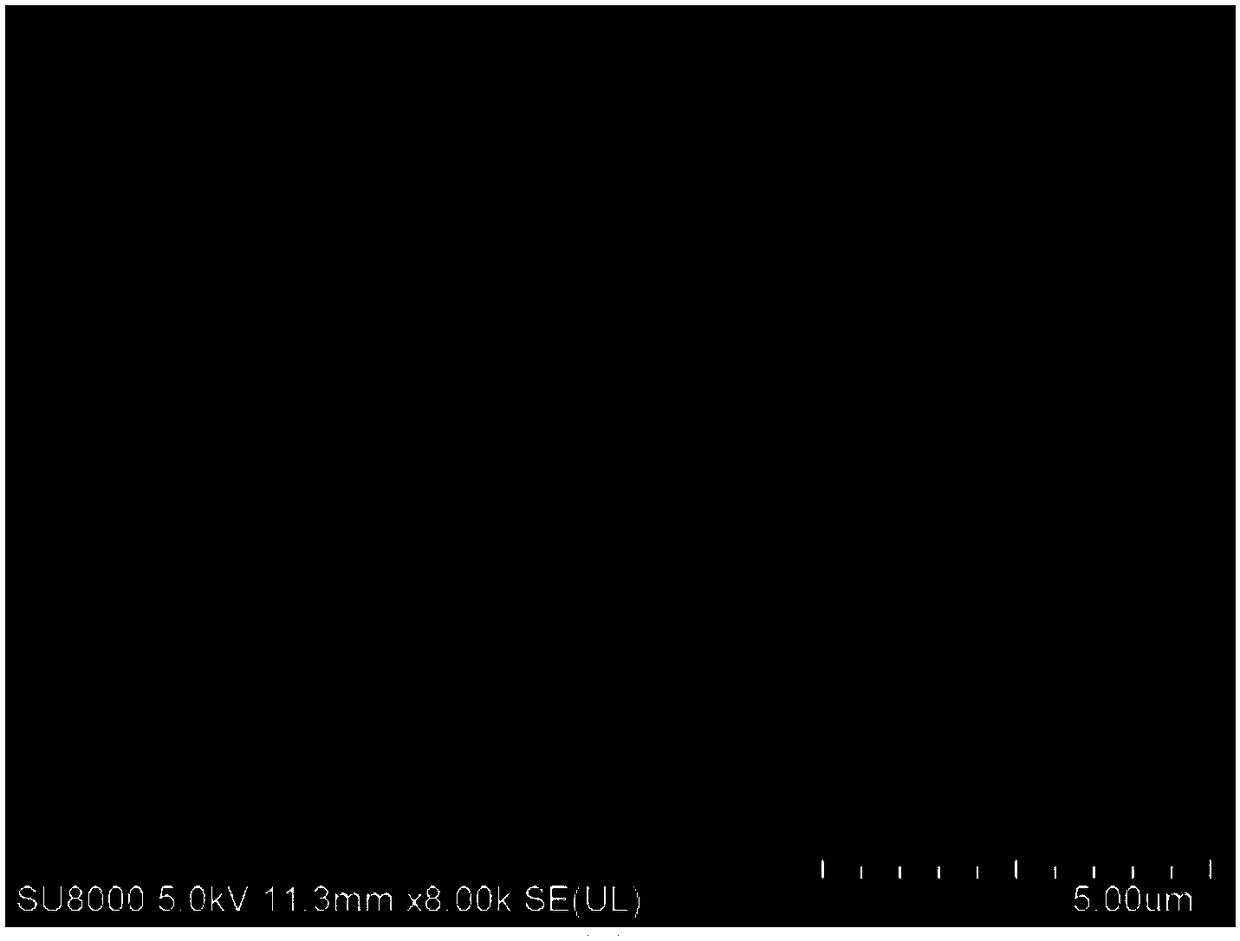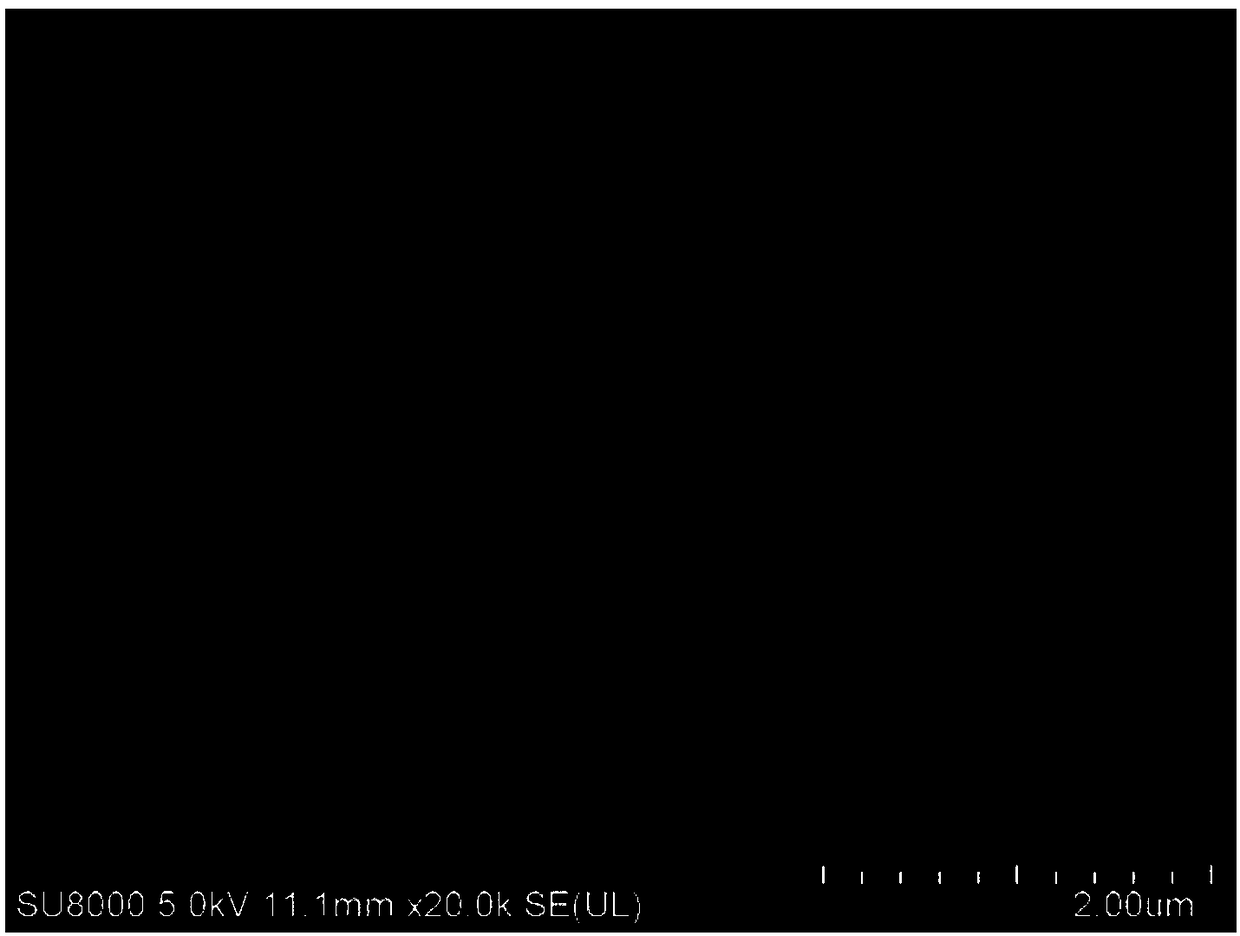Preparation method of polyaniline nano-microspheres with core-shell structure
A technology of nano-microspheres and core-shell structure is applied in the field of preparation of polyaniline nano-microspheres, which can solve the problems of affecting the electrochemical properties of materials, difficult to control the process route, uneven size distribution, etc. Dispersibility, the effect of increasing the conductive effect
- Summary
- Abstract
- Description
- Claims
- Application Information
AI Technical Summary
Problems solved by technology
Method used
Image
Examples
Embodiment 1
[0034] (1) Add 95mL of ethanol, 5mL of deionized water, and 1.818g of polyvinylpyrrolidone into a four-neck flask. Under nitrogen protection, after magnetic stirring at 70°C for 20min, add 20g of styrene and 0.182g of azobisisobutyl Nitrile, magnetically stirred for 12 hours, then naturally cooled to obtain a white emulsion. The product was washed with absolute ethanol, centrifuged and vacuum-dried at room temperature for 10 hours to obtain polystyrene microsphere powder.
[0035] (2) ultrasonically disperse the above polystyrene microsphere powder into a mixed acid with a volume ratio of concentrated sulfuric acid and concentrated nitric acid of 3:2, react at 40° C. for 2 h, wash and dry to obtain nitrated polystyrene microspheres;
[0036] (3) The above-mentioned nitrated polystyrene microspheres were treated with Na 2 S 2 o 4 Reduction at 70°C for 5h to obtain aminated polystyrene microspheres;
[0037](4) After dissolving 0.2g aniline in chloroform to obtain aniline sol...
Embodiment 2
[0039] (1) Add 95mL of ethanol, 5mL of deionized water, and 1.818g of polyvinylpyrrolidone into a four-neck flask. Under nitrogen protection, after magnetic stirring at 70°C for 20min, add 20g of styrene and 0.182g of azobisisobutyl Nitrile, magnetically stirred for 12 hours, then naturally cooled to obtain a white emulsion. The product was washed with absolute ethanol, centrifuged and vacuum-dried at room temperature for 10 hours to obtain polystyrene microsphere powder.
[0040] (2) ultrasonically disperse the above polystyrene microsphere powder into a mixed acid with a volume ratio of concentrated sulfuric acid and concentrated nitric acid of 3:2, react at 50° C. for 1 h, wash and dry to obtain nitrated polystyrene microspheres;
[0041] (3) Reducing the above-mentioned nitrated polystyrene microspheres with sodium borohydride at 80° C. for 2 h to obtain aminated polystyrene microspheres;
[0042] (4) After dissolving 0.4g of aniline in chloroform to obtain aniline solutio...
Embodiment 3
[0044] (1) Add 95mL of ethanol, 5mL of deionized water, and 1.818g of polyvinylpyrrolidone into a four-neck flask. Under nitrogen protection, after magnetic stirring at 70°C for 20min, add 20g of styrene and 0.182g of azobisisobutyl Nitrile, magnetically stirred for 12 hours, then naturally cooled to obtain a white emulsion. The product was washed with absolute ethanol, centrifuged and vacuum-dried at room temperature for 10 hours to obtain polystyrene microsphere powder.
[0045] (2) ultrasonically disperse the above polystyrene microsphere powder into a mixed acid with a volume ratio of concentrated sulfuric acid and concentrated nitric acid of 3:2, react at 45° C. for 1.5 h, wash and dry to obtain nitrated polystyrene microspheres;
[0046] (3) Reducing the above-mentioned nitrated polystyrene microspheres with sodium borohydride at 75° C. for 3 h to obtain aminated polystyrene microspheres;
[0047] (4) After dissolving 0.8g of aniline in chloroform to obtain aniline solut...
PUM
 Login to View More
Login to View More Abstract
Description
Claims
Application Information
 Login to View More
Login to View More - R&D
- Intellectual Property
- Life Sciences
- Materials
- Tech Scout
- Unparalleled Data Quality
- Higher Quality Content
- 60% Fewer Hallucinations
Browse by: Latest US Patents, China's latest patents, Technical Efficacy Thesaurus, Application Domain, Technology Topic, Popular Technical Reports.
© 2025 PatSnap. All rights reserved.Legal|Privacy policy|Modern Slavery Act Transparency Statement|Sitemap|About US| Contact US: help@patsnap.com



